You are probably here because you need the tips and steps on how to wash your pile of clothes yourself. We’ve got you! If you want to learn more about dry cleaning different clothing materials, including linen, cotton, and lycra, you’re at the right place!
What is Dry Cleaning?
Dry cleaning involves cleaning a garment with chemical solvents instead of water and detergent. However, when you are dry cleaning at home, it won’t be exact ‘dry cleaning.’ Instead, you will hand wash or machine wash gently using a procedure that protects your fabrics.
Many laundry experts agree that garments labeled as dry clean can also be washed by hand or machine following some professional tips. However, if the label is ‘dry-clean only,’ then hand it over to a professional or learn to dry clean.
How To Dry Clean Different Fabrics At Home
Whether you are tired of spending big bucks on dry cleaning or want to try and wash your delicates yourself, dry cleaning your clothes is something you can do at home. There are a couple of ways to dry clean your clothes, but to make it easy to understand, we broke it down according to fabric materials.
1. Drycleaning Cotton at Home
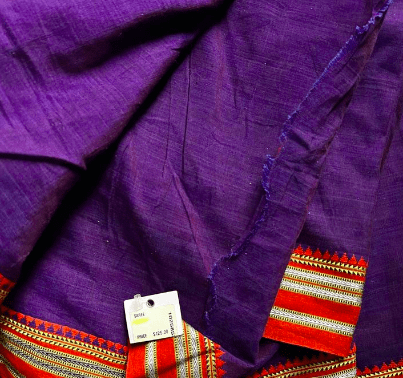
Most cotton clothes do not need to be dry cleaned. So, you can wash them cold or warm in a machine and even dry them, too, since they are usually preshrunk. It’s a little tricky to give tips on washing cotton because there are so many cotton fabrics.
Here are some basic steps involved:
Step 1: Treat for Stains
Before you start washing your clothes, you should treat them for stains to avoid making the stain permanent. Some common stains you can treat are oil, ink, and blood. You can use a stain remover or some home remedy like baking soda and water to pretreat stains before washing them.
Step 2: Wash the Fabric
First and foremost, separate the white clothes from the colored clothes to prevent color bleeding. Wash your cotton fabric, especially brightly colored ones, in cold water (30oC or below). Whites can be washed in lukewarm water, and heavy dirty items or items like rags and towels can be washed in hot water. You can wash by hand or with a machine using high-performance laundry detergents. Luckily, most laundry detergents work effectively for cotton.
Consider the regular cotton wash cycle or check the garment tag for instructions if it’s by machine.
Step 3: Dry Your Cotton Fabrics
It’s recommended not to machine-dry cotton because heat can shrink cotton. For this reason, it’s best to air dry. If your clothes are dryer-safe (check label), you should dry them at a low temperature.
Step 3: Iron
It is safe to iron 100% cotton. They get wrinkled quickly after machine drying them anyways. Use low or medium heat while ironing to avoid stretching or scorching fabric. You can also turn the fabric inside out before ironing it.
2. Drycleaning Wool/Cashmere at Home
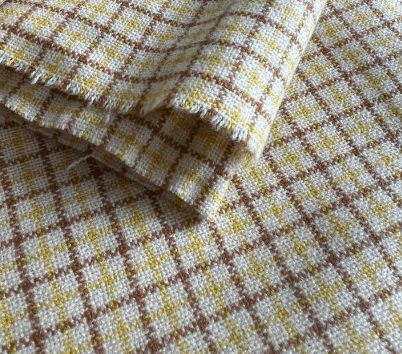
Your sweaters and woolen garments can become a dry cleaning expense, but there are simple ways you can wash them at home. Here are some steps:
Step 1: Again, Start with The Stains
Pretreat the stains on the wool using a stain remover or tips for removing specific saints,
Step 2: Wash
Start by removing detachable parts of your wool garments, like the lining and hoods. Next, throw the garment in a mesh bag with the detachable and select the delicate or hand wash cycle on your washing machine. Use cold water for your washing to prevent shrinkage. Also, consider using detergent or shampoo made specifically for wool or other delicates.
Step 3: Drying
Your wool and other delicate garments shouldn’t be in the dryer. Lay it in its natural shape on a rack or clean towel to dry. You can also hang to dry but avoid direct heat sources like sunlight to avoid shrinkage
Step 4: Steam Your Wool Garment
It’s best to steam your wool garments to remove wrinkles and odors rather than iron them. Ironing wool fabrics can damage the natural pile of yarns, and you don’t want that.
4. Drycleaning Linen at Home
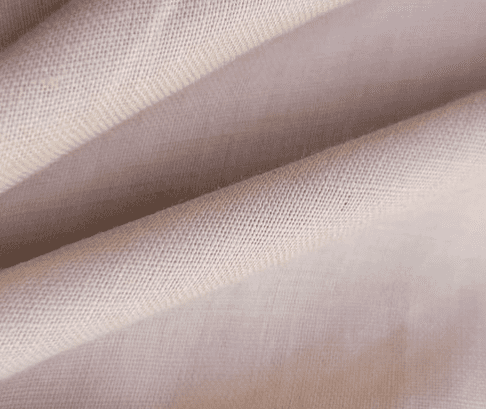
Linen is made from flax fibers and can lose its crispiness if not washed correctly. Despite this, linens are one of the easiest fabrics to care for. You can hand wash or machine wash your linens at home.
Step 1: Separate Clothes and Pre-Treat Stains
Start by separating white, dark, and colored fabrics and wash them separately from other fabrics.
Step 2: Wash in Lukewarm Water
It’s best to wash your linen materials with lukewarm water for the best results. High water temperature can weaken the linen and cause shrinkage.
If you are using a machine, use the gentle machine cycle and avoid overloading the machine. You can use linen-formulated detergents for your fabrics, which are better than generic detergents.
If washing by hand, soak the linen garment for 10 minutes in lukewarm water and 1tsb of detergent. Then, gently agitate the garment to remove dirt and drain the soapy water. Next, rinse the basin and refill with cool water to rinse the garment until no soap is left.
Don’t wring or twist the fabric; instead, you should swish the garment.
Step 3: Drying your fabric
There are different methods to dry your linen garments, so it all comes down to a choice:
- You can tumble dry on low heat
- You can also dry by hanging or airing.
Do not wring your linen fabric to remove excess water; you can instead roll it in a clean towel.
Step 4: Ironing Linen
Linens will crumble after washing, so you should consider ironing them to remove wrinkles. Set your iron to linen setting and press the fabric when it’s still damp for the best results.
5. Drycleaning Silk and Delicates at Home
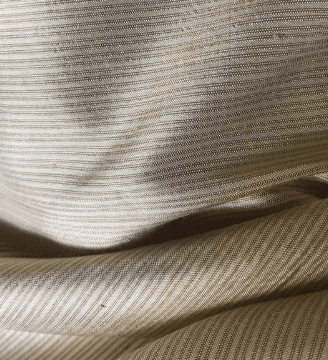
Silk is a luxurious fabric, so it requires special care to protect them from damage. Most silk fabrics have a ‘dry clean’ tag, but you can also wash them by hand gently. If your fabric care label says ‘dry clean only,’ then it means the fabric is very delicate, and the best is to take it to a professional.
The process for washing silk is almost similar to other fabrics except that you shouldn’t wring your silk fabric.
Step 1: Test for Colorfastness
Silk materials tend to fade easily, so it’s best to test for colorfastness before washing it. Use a wet cotton swab or damp cloth to dab an inconspicuous area of your fabric. If the color bleeds out, it’s best to have a professional handle it. If not, proceed with the other steps.
Step 2: Sort your Fabrics
You don’t want to wash your delicate fabrics with materials like jeans or cotton curtains. So it’s best to sort out your clothes before washing them.
Step 3: Proceed to Wash
By hand: Fill up your basin or tub with cool water and detergent. You should use a detergent specifically designed for delicates or silk. Add your silk fabrics and let them sit in the soap mix for 10 minutes. Next, agitate the fabric gently to remove dirt and drain the water. Then, rinse the fabric until there is no longer a sign of soapiness.
By machine: If you are washing your silk by machine, you should put your fabric inside and place it in a mesh bag. A mesh bag is essential for washing silk because it protects your fabric from getting caught with other items. Use cold water and set the machine to the delicate cycle. Lastly, use the shortest spin cycle on your washing machine.
Step 4: Drying
Don’t dry your silk in direct sunlight because it can cause the color to fade. Also, don’t tumble dry your silk fabrics to avoid shrinkage and damage. Instead, use a towel to soak up excess moisture from the fabric, then hang or lay it flat to dry up.
Step 5: Ironing
It would help if you only ironed your silk when it’s dry. A good practice when ironing is to put a cloth between your silk and the iron and turn the silk inside out. Lastly, set the iron to the lowest setting or the silk setting. You can store your fabric in a breathable fabric until you plan to wear it.
6. Drycleaning Leather at Home
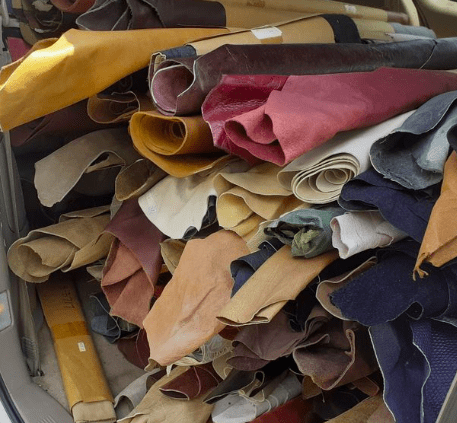
Leather is a very delicate material to wash. If your leather garment has a ‘dry-clean only’ or ‘not washable’ label, you shouldn’t do it yourself. If the leather is washable, you can follow these steps:
Step 1: Spot Testing
Wet a clean white cloth or cotton wool and blot the item for color bleeding. If there is discoloration in the area, then do not wash it. If the leather item passes this test, continue with the next step.
Step 2: Washing the Leather
Machine Wash: Place the leather inside a mesh washing bag and set the washing machine to a delicate cycle. Use cold water for your leather at a low spin with a mild detergent.
Hand Wash: Fill up the sink or basin with cold water, add detergent, and then the leather item. Allow to soak for 30 minutes, and then rinse until the suds are out. Also, don’t wring and don’t place it in a dryer.
Step 3: Drying
Avoid using a dryer on your leather. It’s a no, no. Instead, hang to dry by positioning the item properly on a hanger or a drying rack. You can then steam to straighten wrinkles.
7. Drycleaning Lycra & Spandex at Home

Your swimsuits, leggings, and sportswear fall in the Lycra/spandex category and are known for their stretch and elasticity. For this reason, it’s crucial to be careful when washing them to avoid losing their elastic qualities.
Step 1: Presoak or Pretreat Stains If Necessary
If you have stains on your Spandex, you should remove them right away by adding a mild detergent to the spot and soaking it in water before washing it as normal. Also, if the fabric is heavily soiled or dirty, consider soaking it in water and baking soda mix for up to 30 minutes.
Step 2: Washing the Lycra or Spandex Fabric
You can decide to machine wash or hand wash your Lycra, but it’s best to hand wash them to prevent stretching. Use a detergent without chlorine because it can destroy your clothing material.
Mix the detergent in lukewarm water to hand wash it and then submerge the garment. Soak for about 30 minutes, then agitate it to remove stains. Then, rinse the clothes using cool water to remove soap residues.
Machine washing: Place your Lycra/Spandex fabric in a mesh washing bag to prevent overstretching. Also, ensure that your machine is at the lowest spin and on the delicate cycle
Note:
- Always wash your spandex with cold water to maintain elasticity.
- Squeeze out extra water but don’t wring it.
Step 3: Drying Lycra/Spandex
It’s not recommended to dry your spandex clothing in a tumble dryer. Instead, remove the excess water by rolling it in a towel and then air dry it away from direct sunlight.
Step 4: Ironing
Spandex is a very stretchy material that doesn’t wrinkle when washed. So you don’t need to iron your material unless necessary. In this case, use the lowest heat setting on the iron.
8. Drycleaning Velvet at Home

Velvets are unique clothes, and like other delicate fabrics, they have specific cleaning instructions. Your velvet fabrics are either pure or crushed velvet, and it’s best to know the type you are dealing with. Pure silk velvet should be dry cleaned only (by a professional), but crushed velvet is often mixed with polyester or cotton and can be machine or hand washed.
Step 1: Find a Suitable Washing Detergent
The best method to remove your velvet stains is diluting homemade products like baking soda and lemon juice. Or, you can use a detergent specifically made for velvet or other delicates. Bleaches are ruled out.
Step 2: Place in a Mesh Bag
Place your crushed velvet fabric in a mesh bag to prevent damage. Also, it would help if you got a clothing brush to remove dirt that accumulates after wear.
Step 3: Wash in the Gentle Cycle
To wash your velvet properly, ensure you use the gentle cycle and stick with cold water. Also, ensure you wash it separately from rough materials like denim.
When handwashing velvet, you should turn the fabric inside out before washing. Then, mix your laundry detergent with cool water and submerge your fabric. Rinse thoroughly until the soap is entirely out.
Step 4: Drying
You should hand or lay flat your velvet fabric to dry.
Step 5: Steaming
Velvets are susceptible to creases and wrinkles, so using a steamer is best. You can also use an iron but ensure you set it to steam setting.
9. Drycleaning Denim/Jeans at Home

Jeans are very comfortable and a go-to outfit for many people. At the same time, jeans require special care, and it’s best to wash them correctly.
Many laundry experts say it’s best to wash denim by hand to extend its lifespan. However, you can still use your machine if you can’t hand wash. You should use a detergent or soap that preserves color for your jeans as it will help hold onto the dyes and prevents fading.
Step 1: Turn Your Jean Inside Out
Before you start washing by machine, it’s best to turn your jeans inside out to prevent fading and wash as usual.
Step 2: Wash In Cold Water
First, separate your light and dark jeans and wash them in separate loads to prevent color transfer. You should only wash your denim in cold water because hot water can damage the dyes.
If you are washing by hand, simply place your jeans in cold water and detergent mix. You can also add vinegar to the mix. Next, put in your jeans and swish around for 2 minutes. Then leave the jeans in for about 20 minutes. Now, drain out the dirty water and rinse in cold water.
Step 3: Dry your jeans
You can tumble dry your denim on low heat and in the delicate cycle. Also, it’s best to take out your jeans while it’s still a little damp and smooth out wrinkles. Afterward, hang and air-dry the jeans. Be careful not to expose your jeans to very high temperatures as it can damage the stretch.
10. Drycleaning Rayon/Nylon at Home

Rayon is a common cloth material, primarily due to its versatility. When washing your rayon fabrics, you should be careful when drying them to avoid shrinking.
Step 1: Read The Fabric Label
Your garments will come with a washing direction, so you should go through it before washing.
Step 2: Hand wash or Machine wash Your Fabric
Fill up the basin or machine with warm water and add a mild detergent formulated for delicate garments. Don’t forget to pretreat stains if there are any stains on the fabric.
Set the machine to the delicate cycle and wash at a low or medium spin. Ensure that the material is suitable for machine washing (you will find it on the label). If it doesn’t, items are best to wash by hand.
To wash by hand, soak the rayon outfit in warm water and detergent and spin the bucket with your hands. Do this for about 5 minutes before you rinse with clean water until the soap is completely out. You can then squeeze out excess water but don’t squeeze too hard to prevent shrinking.
Step 3: Drying
It’s best to allow your rayon fabrics to dry by hanging or air drying on a flat surface. Tumble drying isn’t a good option because your garment will shrink excessively.
Step 4: Ironing
Rayons always require ironing because of how they wrinkle during washing. Turn the rayon fabric inside out while ironing and set the iron to a rayon/nylon setting. You can also consider placing a cloth between the iron and the fabric before ironing.
When To Take Clothes To The Dry Cleaner?
If you don’t think you can handle washing certain clothes yourself, it’s best to get a professional. Also, ‘Dry Clean Only’ on clothes means they should be carefully dry cleaned by a professional. Alternatively, you can get a DIY dry cleaning kit and follow your garment’s laundry guide instructions.
